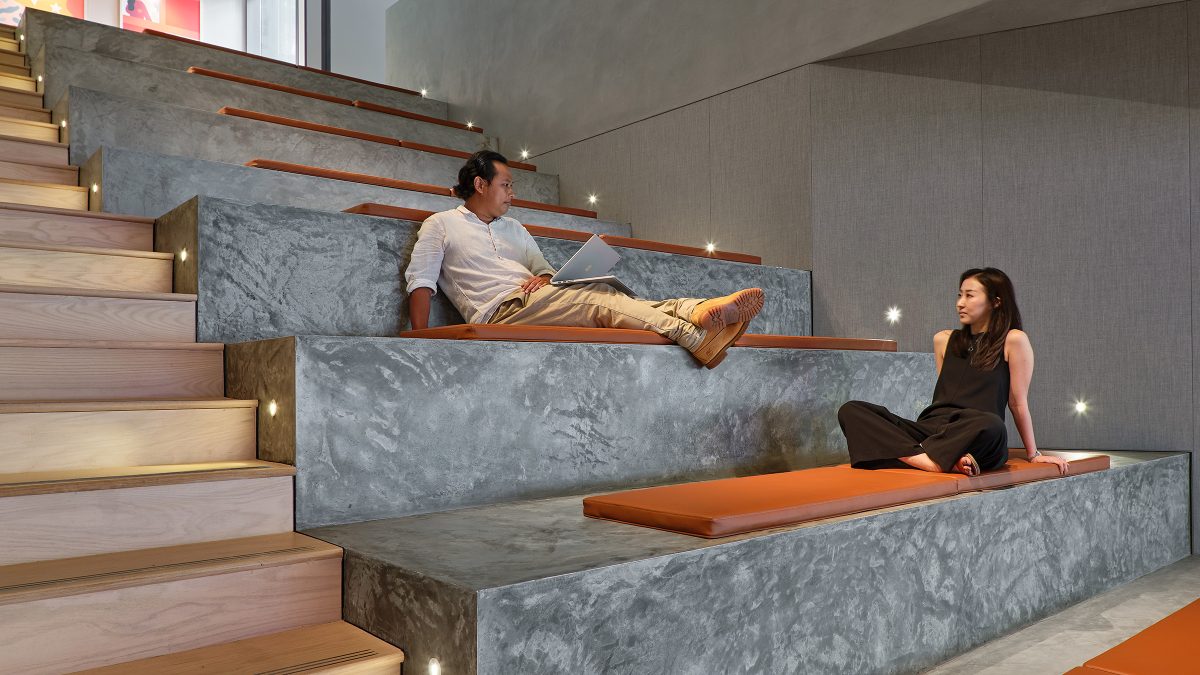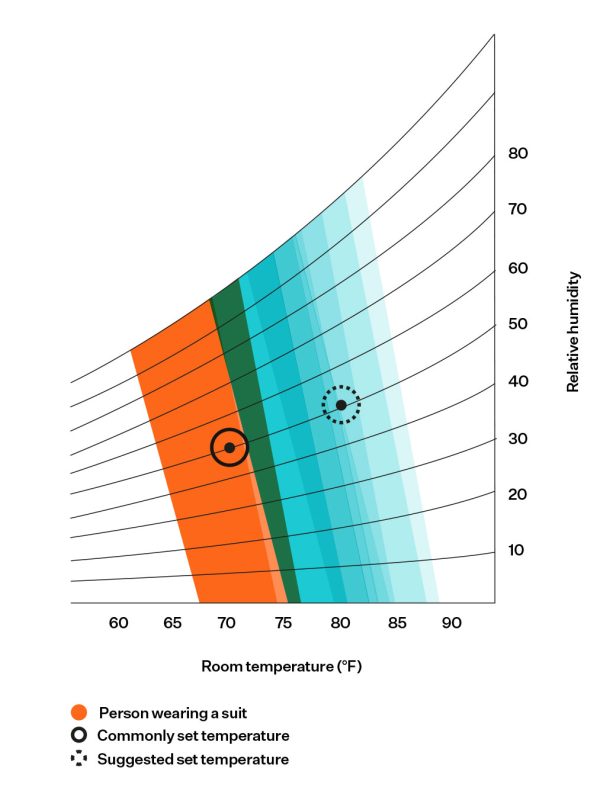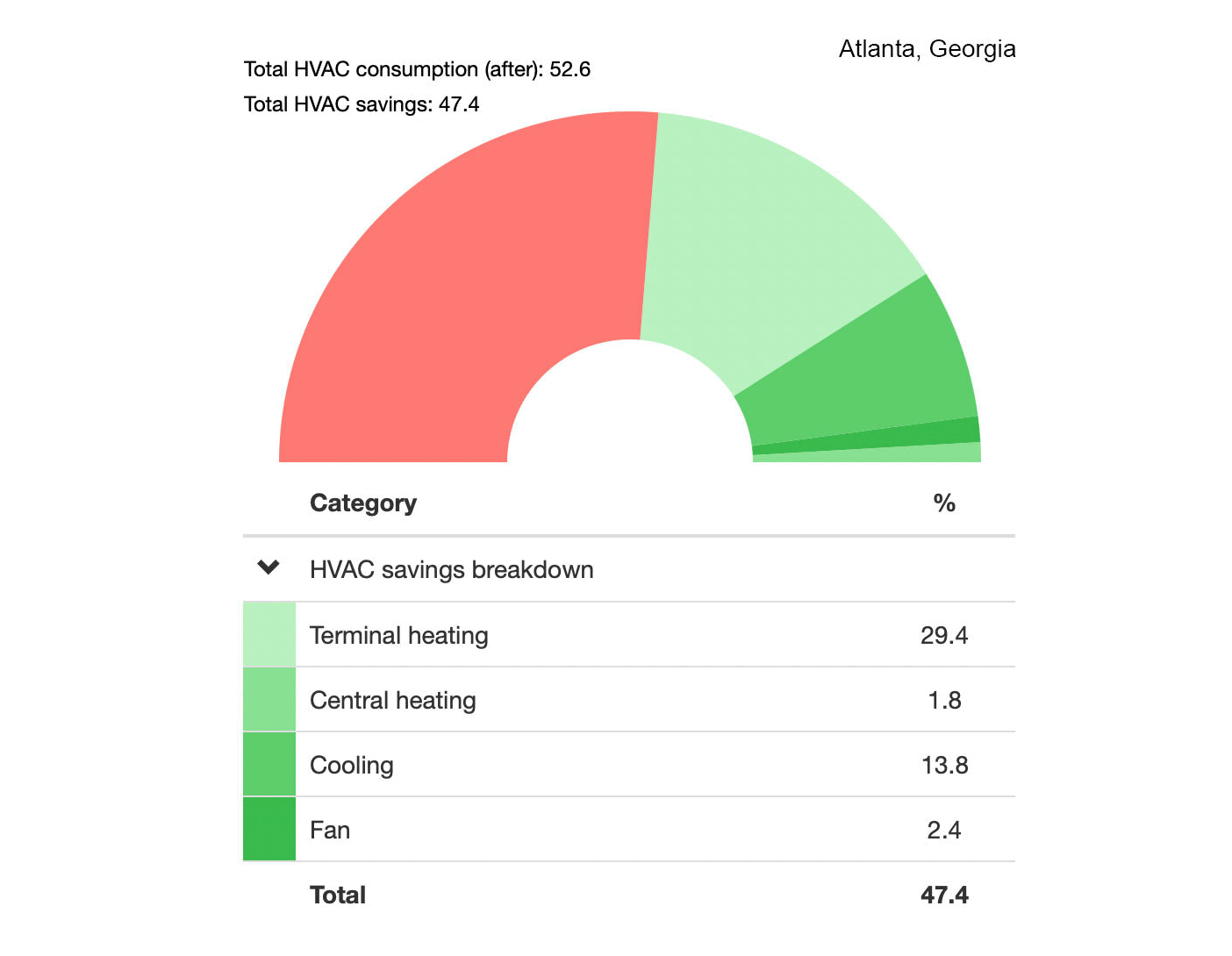









 LinkedIn, Shanghai
LinkedIn, Shanghai The world continues to shift towards new ways of working. One of the most potent outcomes is increased choice in how, where, and when we work.
Employers are embracing greater flexibility which is a welcome change for many workers. But other traditions persist. This article explores office thermal comfort and its impact on the environment.
Although companies are thinking about their workspaces in the context of employees’ modern needs, one topic is glaringly absent: office attire.
The pandemic saw a sizable cultural shift toward less formal clothing—most people weren’t getting dressed up in their professional best, only to work from home.
As employees re-enter the workplace, there’s a strong desire to continue the trend of less formal attire in business settings. One of the most notable pieces of clothing nominated for retirement? The suit.
 Zendesk, Singapore
Zendesk, Singapore These three considerations make a strong case for revisiting prescriptive office attire:
The way an employee expresses themselves at work matters. Companies should encourage people to be themselves. As we continue to create more flexible offices, clothing must be part of the equation.
It’s worth noting that most dress codes don’t accommodate the nuances of gender identity. In addition, there are cultural differences in attire that standard engineering practices have not captured.
Ending the corporate-sponsored suit mandate will bring more equality to offices for everyone.
Although suits are less common today than they once were, they have historically set the baseline for the temperature dial. Suits are far more insulative than other kinds of clothing, leaving many people quite literally, out in the cold.
The ASHRAE Standard 55, published by the American Society of Heating, Refrigerating, and Air-Conditioning Engineers, determines the ideal temperatures to keep people comfortable and productive. The standard considers many factors, including temperature, humidity, air speed, metabolic rates from occupant activity level, and “clo” (short for “clothing”), the unit used to measure thermal insulation from clothes.
More layers yield a higher clo measurement. Winter wardrobes register at 1.0+ clo, whereas summer clothing could be as low as 0.5 clo. Regardless of the season, suits provide more insulation, coming in between 0.95-1.0 clo. Below is a photo of a project we worked on for a financial services company in New York City. The occupants are wearing a broad range of clothing levels and types, ranging from full suits to t-shirts. The clo values from the clothing in the group range from 0.66 to 1.02.
 Demonstrating different clothing levels at Blackstone (bXii), New York
Demonstrating different clothing levels at Blackstone (bXii), New York An office set to 22°C (72°F), a historically common summer air temperature, is likely to be acceptable for a person in multiple layers—even on a 30°C (86°F) day! However, those who aren’t layering, because they are dressing for warm summer weather, may be far too chilly to be comfortable.
The figure below indicates a comfortable temperature band, shown in blue, as varied as the occupants, ranging from 23.5 for a man wearing a suit to 29°C for a woman wearing typical summer clothing. As a result, an average temperature of 26°C or 79°F might be more equitable across the range of people and clothing levels. Alas, the thermostat dial is usually turned down toward the low end, leaving a significant percentage of the workforce pulling on sweaters, even on the hottest days of the year. This “overcooling” phenomenon has been happening for decades, even though fashion norms have changed and fewer employees wear formal clothing to work.
When office thermal comfort doesn’t support employees, it’s hard for them to do their best work. Studies show that comfort affects productivity and wellbeing. Are you reinventing your office space and creating an inclusive workplace where all workers can thrive? Then you must provide a range of seasonal temperatures and tell staff that business wear is optional.
The graphs below, adapted from the CBE Thermal Comfort Tool demonstrate the alternative setpoint temperature at which people will be comfortable across a range of clothing levels. The proposed temperature setpoint meets 5/6 of the comfort bands, whereas the current standard only meets 1/6.
 Tartarini, F., Schiavon, S., Cheung, T., Hoyt, T., 2020. CBE Thermal Comfort Tool: online tool for thermal comfort calculations and visualizations. SoftwareX 12, 100563.
Tartarini, F., Schiavon, S., Cheung, T., Hoyt, T., 2020. CBE Thermal Comfort Tool: online tool for thermal comfort calculations and visualizations. SoftwareX 12, 100563. Suit culture isn’t just bad for employee productivity; it’s also in direct conflict with sustainability goals. Companies are using more energy (and spending more money) than needed to keep their offices at a false-ideal temperature. They could significantly reduce consumption by allowing people to dress appropriately for the season and heating or cooling the building accordingly.
For example, running air conditioning systems in the summer requires enormous amounts of energy and is extremely expensive. One study followed businesses in Manhattan aiming to conserve energy by reducing air conditioning during the summer months.
Below is a comparison between the energy consumption to deliver standard temperature setpoints of 21°C (70°F) in winter and 23.3°C (74°F) in summer, compared with a more adaptive setpoint of 20°C (68° F) in winter to 25.5°C (78° F) in summer. This information is from the CBE Sepoint Savings Calculator:

 Hoyt, T., E. Arens, and H. Zhang, 2014. Extending air temperature setpoints: Simulated energy savings and design considerations for new and retrofit buildings. Building and Environment, September. doi:10.1016/j.buildenv.2014.09.010
Hoyt, T., E. Arens, and H. Zhang, 2014. Extending air temperature setpoints: Simulated energy savings and design considerations for new and retrofit buildings. Building and Environment, September. doi:10.1016/j.buildenv.2014.09.010 When employees are encouraged to dress for seasonality, indoor temperature ranges can increase in the summer and reduce in the winter, resulting in significant savings in energy use and operational carbon.
So, why haven’t thermal standards evolved to meet modern demand? The simple answer is: inertia.
Even with data to back up the argument for setting an office to 26°C (78°F), there is an assumption that “people don’t like it”. Although a large body of research demonstrates the value, there’s a lack of understanding about the connections between temperature setpoint, occupant thermal comfort and energy use.
Another challenge is tradition and the expectation of professional attire, especially in more formal sectors. Until this ends, offices will continue to expend energy and money unnecessarily to cool offices for employees to wear well-insulated outfits, regardless of the season.
As an inclusive global business, we adopt practices from the leading standards in occupant health and wellbeing. We have flexible dress codes, free-address and adaptive temperature setpoints in our offices and encourage clients to do the same. We continue to explore how the industry can better measure, understand and adapt offices to address equality and decarbonisation – for people and planet.
Want to learn more about office thermal comfort? Please speak to a member of the M Moser Sustainability team.
Global Director